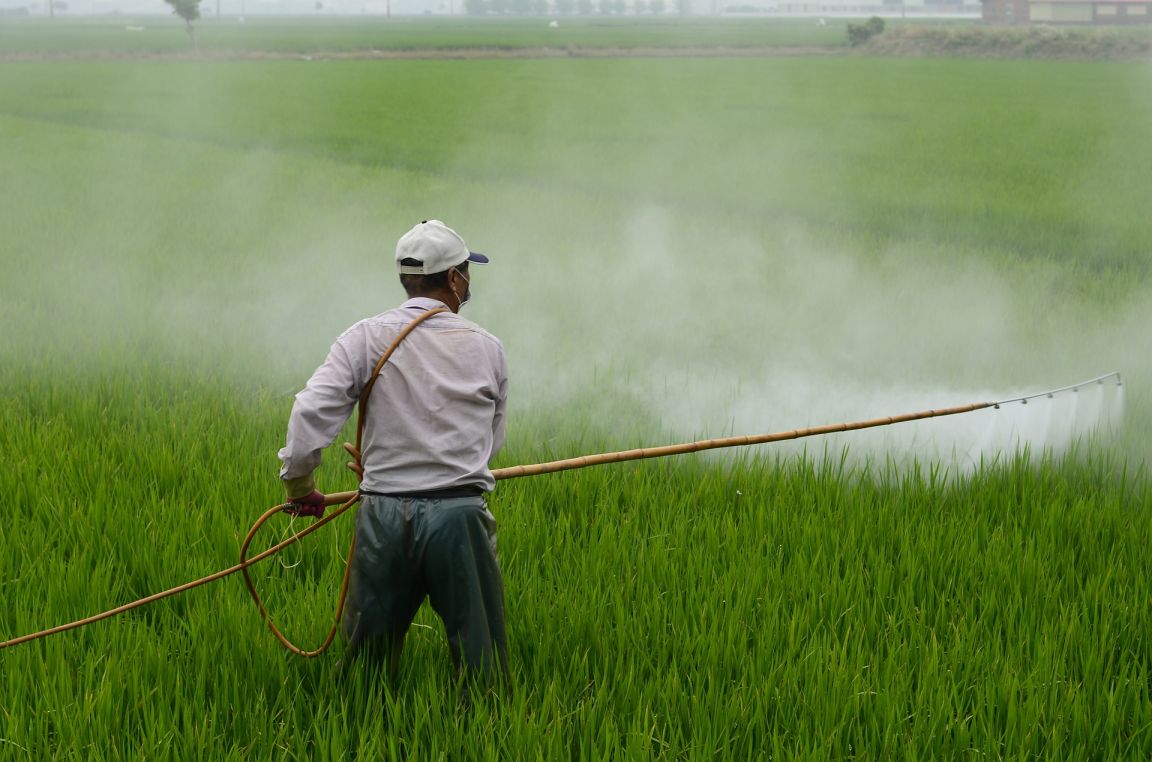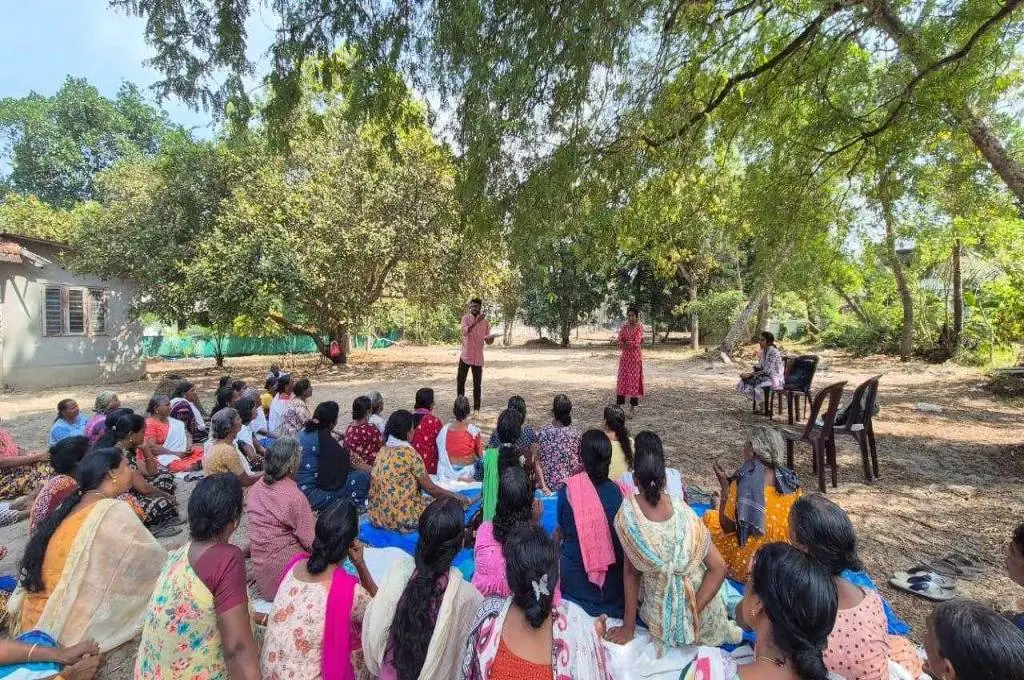In India, there are around 31 farmer suicides every day, and 948 every month. In addition, 570 non-farmers commit suicide every day causing immense family and community distress. Though much public attention has been focused on farmer and farm-labour suicides, little has been said about possible solutions that aren’t predicated on structural shifts to the agricultural sector, the economy, or combating climate change. After more than a decade of research, the Center for Pesticide Suicide Prevention (CPSP) at The University of Edinburgh suggests that there may be a solution—a quick fix of-sorts—that could mitigate the number of suicide-related deaths in India: banning highly hazardous pesticides (HHPs). Recent policy shifts towards sustainable agriculture, combined with evidence that banning pesticides can reduce suicide-related deaths, presents a unique window of opportunity for us to address this problem.
Understanding the link between pesticides and suicides
Pesticide consumption is one of the three most important forms of suicide in the world, accounting for nearly a fifth of the world’s suicides. Close to 95 percent of pesticide-related suicides take place in rural communities in low and middle income countries. This can be seen as a legacy of the Green Revolution, which exponentially increased the availability and use of highly toxic pesticides in agriculture.
There are 86 pesticides being used in India that have been banned and/or heavily regulated in other countries
Currently, there are 86 pesticides being used in India that have been banned and/or are being heavily regulated in other countries. Thirty percent of the pesticides used in India are classified as Class I pesticides by the World Health Organisation (WHO), which means that they are extremely hazardous, and deadly when ingested even in small quantities. Within rural communities, the problem of pesticide-related suicides is not limited to farmers alone. The easy availability and unregulated access to pesticides makes the rate of suicide deaths among non-farmers far higher than among farmers and farm labour.

The reasons for this are manifold:
- Easy access: Anyone can buy pesticides since their purchase is unregulated. They are often not stored safely and can be found lying about in homes, making it easy to ingest them either by mistake, or intentionally.
- Impulse: According to the WHO, a large number of pesticide related acts of self-harm are impulsive (rather than premeditated). Easy access to lethal pesticides allows people to immediately act on impulsive suicidal thoughts. Without it, the person would have to go out of their way to find a means of attempting suicide, potentially giving them time to reconsider harming themselves.
- Low awareness: Limited knowledge regarding proper usage and storage of pesticides also contributes to a number of accidental deaths. In 2015, 7,672 people in India died due to accidentally ingesting pesticides and insecticides. For instance, in Maharashtra, ten people died due to cooking food in the same drum where they had mixed pesticides—deaths that could have been easily prevented.
Related article: Debate series | Why ZBNF is good for India
Pesticides aren’t only a ‘rural problem’
Poisoning by pesticides—both intentional and accidental—is a major public health issue. Beyond the issue of direct consumption, pesticides also enter into the food and water we consume. A Ministry of Agriculture report shows that Indian food samples have a high level of pesticide residue, exceeding the maximum permissible limit.
Pesticide toxicity is a public health emergency, but much like the ongoing climate change crisis, it is conveniently being ignored.
The presence of pesticides in food can suppress the immune system, leading to a number of diseases, especially cancer. Cancer levels across districts in Punjab are abnormally high—almost twice the national average—and this has been associated with the overuse of pesticides. Research has also found high concentrations of toxic metals across populations in Punjab.
Pesticide toxicity is a public health emergency, but much like the ongoing climate change crisis, it is conveniently being ignored, since its effects are not visible and immediate.

Not only does the heavy usage of pesticides poison people, it degrades the capacity of land and ground water to grow food and sustain plant and animal life, threatening both biodiversity and the future of food security.
Insects also develop resistance to the pesticides, forcing farmers to either increase the quantity of pesticides they use, and/or their lethality. Pesticides remain in the environment for decades and affect our entire ecological system.
Due to high levels of pesticides, Indian food imports are often rejected by other countries. Not only do Indian citizens end up consuming pesticide-laced food that other countries won’t even let in, it also reduces the income of farmers, who aren’t always aware of the toxicity of pesticides, and therefore use as much as they can. Rice exports from India have been rejected due to high pesticide residue. Similarly, in 2010, a huge consignment of grapes from Maharashtra was rejected by the European Union because of high levels of chlormequat chloride—a highly toxic chemical used to induce plant growth.

The presence of pesticides in food can suppress the immune system, leading to a number of diseases, especially cancer. | Picture courtesy: Pixabay
India needs stricter regulations
The current scenario may seem hopeless, but a solution exists. Since pesticide related acts of self-harm are more likely to be impulsive, an important way of preventing them is to restrict access to this lethal means of suicide.
Recognising the harmful effects of pesticides on human life and the environment, the Indian government banned 18 pesticides in 2018. Despite being a step in the right direction, this measure has been under scrutiny for being inadequate since the ban doesn’t include some of the most dangerous pesticides, only partially addressing the issue.
This focus on tackling the cause rather than the symptoms of pesticide-related suicide is driving the work of the CPSP, which is trying to remove HHPs from agricultural chains through regulation.
Banning highly hazardous pesticides can bring down suicide rates in agricultural communities.
Through their work in Sri Lanka, they were able to successfully demonstrate how banning HHPs can bring down suicide rates in agricultural communities. The overall suicide rate reduced by a drastic 70 percent between 1995 and 2015, due to simple government action of identifying the most toxic pesticides and replacing them with less lethal ones. Not only was this massive fall achieved in a relatively short period of time, it was at a low cost and had no effect on agricultural yields—a common argument against the regulation of chemical pesticides.
Related article: Debate series | Why ZBNF is not good for India
State governments are realising that there is an urgent need to more effectively regulate pesticides
Individual state governments have started recognising the magnitude of this problem and are taking measures to safeguard their citizens, providing a unique opportunity to take action and influence policy. For instance, Andhra Pradesh has promoted the idea of Zero Budget Natural Farming (ZBNF), which reduces the use of pesticides in agriculture. Kerala, Punjab, and Sikkim have started to limit their pesticide usage, revoked the licences of certain pesticides, and submitted applications to the central government to ban others. In 2019, the Maharashtra government temporarily banned five pesticides in select districts because of an unprecedented rise in poisoning by pesticide inhalation.
However, under the Insecticides Act of 1968, state governments can only temporarily ban pesticides for a period of 60 days, and the power to completely ban them rests with the central government. These disparities in power means that states can’t effectively regulate pesticides. A temporary ban neither encourages the use of safer alternatives, nor does it significantly reduce usage.
Where we need to focus
Due to the sensitive nature of suicides, the extent of the problem is often under-reported and there is a lack of reliable data, particularly data identifying toxins in the pesticides. Every toxin causes different symptoms and requires different treatments. Often, when pesticide-poisoned patients are brought in, doctors do not know which toxins to treat for, since pesticides may be mixed before they are consumed. Identifying chemicals and using this knowledge to build out treatment protocols can help doctors save time and lives.
Unregulated availability of HHPs denies people the right to safe food, clean water, safe working conditions, and a healthy environment.
In Maharashtra, the Medical Education and Drugs Department has partnered with CPSP to collect and generate data around pesticide related suicides in Yavatmal—a region with one of the highest incidences of pesticide poisoning and suicide deaths. The first set of data is to understand how many people attempt suicide using pesticides, how many are saved, and how many are not. The second set of data tries to identify specific toxins and correlate them to pesticide-poisoned patients. The goal here is to help the state government in its legislative decisions around HHPs, and ultimately, show the state government which pesticides need to be removed. The state can then make a case to the central government.
A new Pesticide Management Bill is set to be heard in Parliament this session. While it’s a step in the right direction, it does not yet cover many critical issues such as a complete ban of all Class I pesticides. Unregulated availability of HHPs denies people the right to safe food, clean water, safe working conditions, and a healthy environment. Pesticide management is by no means a panacea for solving India’s agrarian problems. But, by not effectively managing and regulating toxic pesticides, India is missing out on a huge opportunity to address its interrelated issues of health, agriculture, food, and the environment.
—
Know More
- Understand the adverse impacts of pesticides through the United Nations Special Report on Right to Food.
- Learn more about pesticide suicides from the Centre for Suicide Prevention’s website, which includes case studies, current projects, and best practices from other parts of the world.
- Read the Pesticides Management Bill, 2017 and its review report.
Do More
- As a concerned citizen, you can check for latest updates on the Pesticides Management Bill and also spread awareness among your peers about the adverse effects of highly hazardous pesticides on human life and the environment.




